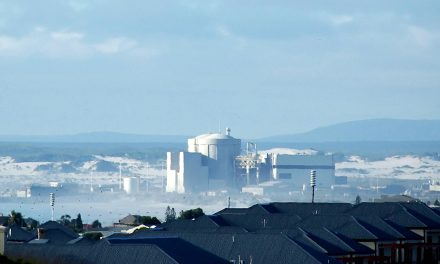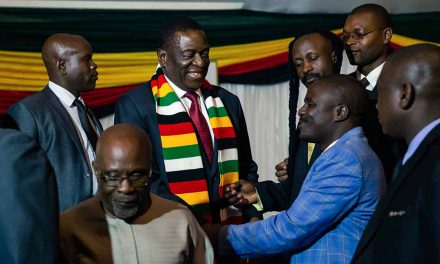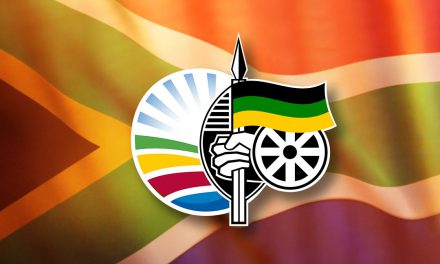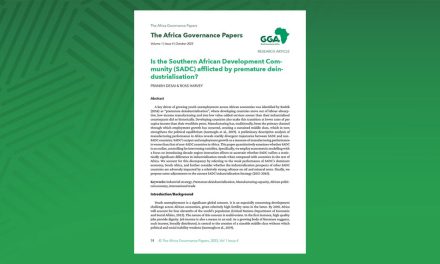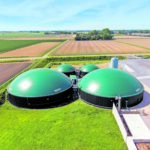In July 2022, President Cyril Ramaphosa announced the much-required energy crisis plan, which aims to increase energy security and end load-shedding. Load-shedding is a euphemism describing rolling blackouts to alleviate pressure on the national transmission grid. Demand outstrips generation supply by between 4,000 megawatts (MW) and 6,000 MW.
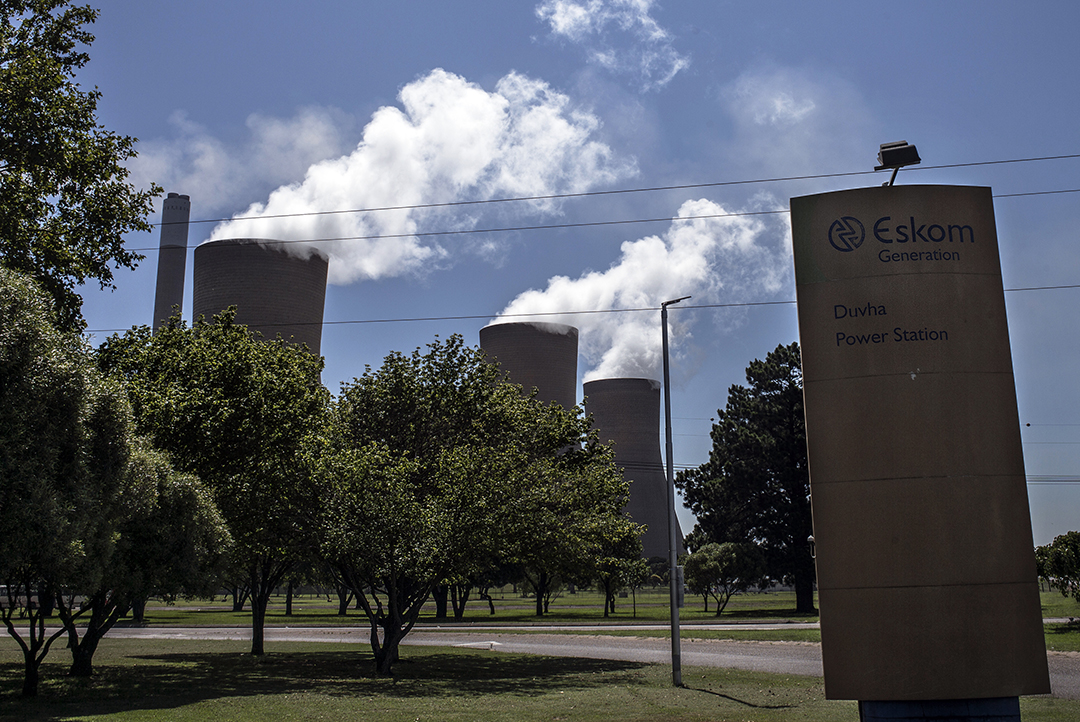
The entrance to the Eskom Duvha Power Station, some 15km east of Witbank, in the coal rich Witbank region of South Africa. Photo: AFP/MARCO LONGARI
Broadly, the government energy plan reforms coincided with the Business Unity South Africa’s interventions that were announced a week before President Ramaphosa’s address. Foremost among these was to rationalise the cumbersome red tape constraining private sector investment in generation capacity and implement a programme to incentivise the efficient use of power to cut demand by 2,600 MW.
As part of addressing the megawatt shortage, South Africa aims to import more power from neighbouring countries, such as Botswana and Zambia, through the Southern African Power Pool arrangement. Additionally, the introduction of a National Energy Crisis Committee comprising key decision-makers in the energy sector is meant to enable better coordination and stronger stakeholder engagement. The committee has prioritised interventions such as making changes to the Regulations on New Generation Capacity to allow municipalities to procure power independently and revive the renewable energy independent power procurement programme (REIPPP). This will enable 2,205 MW from Bid Window 4 to proceed to construction, which has now been connected to the national grid. In this context, for new reforms and the administrative environment to be efficient and effective, serious commitment and transparent governing systems that will result in favourable outcomes and secure energy provision for all South Africans are required. However, the implications of the new reforms need to be carefully considered alongside the Eskom debt question and alternative energy sources.
For one, resolving red tape that constrains private sector investment in generation capacity is a good start. However, taking on independent production without adequate vetting processes in place to support Eskom’s energy supply can come at a high price. For instance, through the Risk Mitigation Independent Power Producer Procurement Programme (RMI4P), a programme aimed to fill the current short-term energy supply had approved more than 60% of an emergency power tender over a 20-year purchase agreement valued at R218 million to Karpowership. Karpowership, a Turkish company that supplies ship-mounted gas-fired power, was meant to supply 1,220 MW to Eskom, starting last month. However, the Department of Environmental Affairs dismissed the initial application after environmental activists lodged complaints about its impact on fishing, local ecosystems, and potential greenhouse gas emissions.
This dismissal has halted the approval process, which has in turn delayed the project and further highlights the inadequate environmental vetting process that resulted in complaints from environmental organisations. Moreover, corruption allegations were levelled against Karpowership and a government official by DNG Energy Limited (DNG), a South Africa-based energy company. It claimed that Karpowership’s local partners, Powergroup SA Limited, approached them seeking a bribe and in exchange would ensure that DNG won a contract. These developments against Karpowership highlight some of the long-standing governance issues that persist in the Department of Mineral Resources and Energy (DMRE), amid attempts to implement an energy plan with fewer red tape procedures. Given this, it would appear imprudent to grant the DMRE powers over starting a second Eskom, as Mineral Resources Minister Gwede Mantashe has proposed.
Importing power from Botswana and Zambia through the Southern Africa Power Pool (SAPP) arrangement has been met with much support, though policymakers will need to proceed with caution. SAPP is the cooperation of the national electricity companies in Southern Africa that represents 12 member states throughout the SADC. Regional electricity integration and power pooling are recognised as cost-effective and a suitable strategies to deal with evenly distributed power supply to meet demand. However, the successful operationalisation of power pools relies on well-developed and stable grid interconnections, adequate generating capacity, and a sound legal framework for cross-border electricity exchanges as well as regional mechanisms for dispute resolution.
Pulling more power from SAPP has been established as one of the key immediate reforms in the energy plan and South Africa, as a member of SAPP, is the largest market in the pool, accounting for 31, 470 MW of the pool’s total quantity of 52, 388 MW demanded in 2020. In November 2021, media reports indicated that major power disturbances in Zambia affected South Africa’s power supply and in turn the entire power pool that ultimately resulted in a 1,000 MW loss. For instance, this size would effectively result in a loss of electric supply to an estimated 1,000 households a month (assuming a monthly household consumption of 900 kWh) or over 33,000 households a day (assuming a daily household consumption of 30 kWh).
Preliminary investigations suggested that the disturbances were caused externally and were therefore not direct failures of the Zambian interconnected power system. Evidently, the power pool is experiencing operational issues and disturbances that need to be carefully monitored and investigated as Eskom gears up to extract more power from the pool. To this end, the SAPP 2021 annual report indicated some of the measures implemented to mitigate these system disturbances. These included various equipment repair and maintenance works carried out for generation and transmission equipment, clearing of vegetation along the key line routes, birds’ nests were relocated, and some insulators were replaced on the 400 kilovolts Matimba, Eskom to Phokoje, Botswana Power Corporation interconnector.
Despite the emergency energy plan being in full motion, Eskom’s debt question remains only half answered. The National Treasury is due to propose a sustainable solution to the debt burden next month in the Medium-Term Budget Policy Statement. Reportedly, the Finance Ministry will provide a bailout to the energy utility and take a portion of the R396 billion debt as part of a process to place the utility in better and sustainable financial standing. On the other hand, debt owed to Eskom by municipalities has grown from R44.8 billion in March to R49.1 million in July – a surge of nearly R5 million in four months. While financial analysts agree that the debt transfer plan is a step in the right direction, it will not be enough to solve Eskom’s governance issues. Operational reforms are necessary and required urgently.
A 2019 report by the Centre for Development and Enterprise proposed key interventions that can address operational and capacity constraints which remain relevant today. One of the key solutions related to generation capacity includes renewable energy sources for the national grid. While the ability of any grid to integrate variable renewable energy sources is dependent on several factors, a multiplicity of small, decentralised wind and solar generators is possible. Additionally, residential demand could be easily supplied by a set of wind and solar plants across the country that can be supplemented with open-cycle gas turbines that can be turned off when not required. Evidently, the emergency energy plan has made a serious commitment to realise this. The plan makes provision to revive the renewable energy procurement programme given that 2,000 MW of solar and wind power have been connected to the grid through Bid Window 4 of the programme. Yet, to date, the official electricity plan that was approved three years ago is outdated and its implementation is two years behind schedule. The role of renewable energy sources is favourable in the South African context, especially considering the climatic advantage.
The energy crisis plan has articulated integral reforms that will assist in securing a sustainable energy supply for all of South Africa. However, for the plan to be effectively realised, the committee must ensure that independent power producers comply with all environmental and social requirements in the context of rationalised red-tape procedures. Therefore a balancing act is necessary to mitigate further project delays but foster an environment where increased local production is prioritised responsibly. This will enable upstream industrialisation through the generation of a clean energy mix that is sustainable and productive for the economic development of South Africa.




